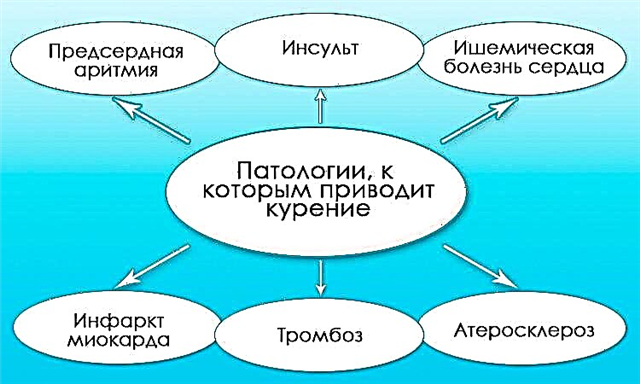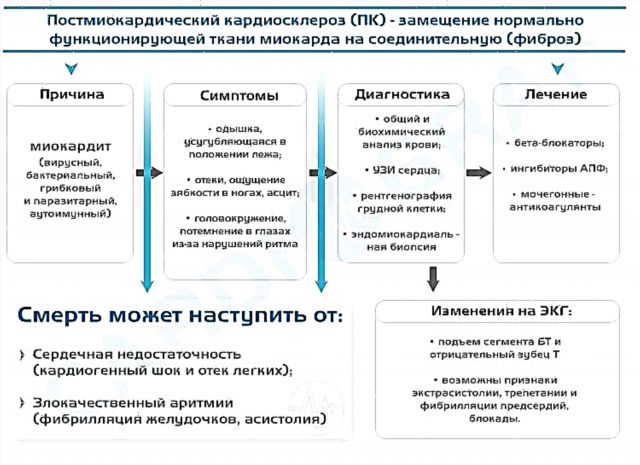Basic information
To begin with, it is necessary to clearly indicate that the concept of allergic tonsillitis is somewhat arbitrary: in the International Classification of Diseases of the 10th revision, such a nosological unit, that is, a separate disease with an assigned code, is absent. It would be more correct to talk about toxic-allergic tonsillitis, which, in turn, is one of the forms of chronic tonsillitis.
The disease is widespread enough: about 16% of the population suffer from chronic tonsillitis. Chronic tonsillitis, in particular allergic-toxic, are not as harmless as it might seem, because they have an adverse effect on the body, especially on children, and can be aggravated by systemic complications.
Causes and provoking factors
 The cause of toxic-allergic tonsillitis is a violation of the immune system, namely: a violation of the formation of acquired immunity. If a person often suffers from ARVI, it can be concluded that memory cells are poorly formed for a particular causative agent of infection. These people often have the same infection.
The cause of toxic-allergic tonsillitis is a violation of the immune system, namely: a violation of the formation of acquired immunity. If a person often suffers from ARVI, it can be concluded that memory cells are poorly formed for a particular causative agent of infection. These people often have the same infection.
Among the provoking factors are:
- the presence of infectious foci in the body, especially chronic rhinitis, sinusitis, sinusitis;
- hypothermia;
- untreated caries;
Signs and symptoms
The allergic form of tonsillitis is characterized by the following symptoms:
- feeling of a lump in the throat, a foreign body;
- a feeling of swelling in the throat, sometimes a feeling of shortness of breath;
- bad breath due to the accumulation of caseous-purulent discharge in the lacunae;
- headache due to chronic inflammation in the pharynx, prolonged tension of the neck muscles, impaired venous outflow;
- general weakness.
Sore throat is rarely complained of.
Forms of the disease
Chronic tonsillitis is usually divided into several forms: simple, toxic-allergic I and II degrees, and the last two will be discussed in more detail below. As for the simple form: such a sore throat is characterized only by local manifestations.
1st degree
The toxic-allergic form of grade I tonsillitis is characterized by the following manifestations and signs:
- subfebrile condition (while the temperature rises periodically);
- cervical lymphadenitis (inflammation of the cervical lymph nodes);
- periodically aggravated painful sensations in the joints.

Also, tonsillogenic intoxication is almost always manifested by general malaise - rapid fatigue, weakness, loss of appetite in both adults and children. In some cases, functional disorders of cardiac activity may be noted, but they occur only during the period of exacerbations. Patients complain of pain in the heart, but in the course of objective studies (for example, electrocardiography), violations are not determined. Changes in laboratory parameters are not stable.
2nd degree
In contrast to the toxic-allergic angina of the 1st degree, the toxic-allergic angina of the 2nd degree is characterized by functional disorders of the cardiac activity, which are recorded during the electrocardiographic study.... Shifts in laboratory parameters when exacerbation subsides are recorded constantly.
In addition, this form is characterized by the following manifestations:
- Constant joint pain of varying intensity, which does not stop even during the period of exacerbation of tonsillitis.
- Heart pains, as well as all kinds of arrhythmias.
- Prolonged subfebrile condition.
- Functional disorders of the liver, kidneys and other organs and systems, which is recorded through various diagnostic measures.
Complications
 Against the background of toxic-allergic angina of the II degree, metatonsillar diseases develop, which have etiopathogenetic connections in common with angina. The course of tonsillitis is associated with the development of an auto-immune process associated with the destruction of one's own connective tissue, while the kidneys, cardiovascular system, and joints are the first to suffer.
Against the background of toxic-allergic angina of the II degree, metatonsillar diseases develop, which have etiopathogenetic connections in common with angina. The course of tonsillitis is associated with the development of an auto-immune process associated with the destruction of one's own connective tissue, while the kidneys, cardiovascular system, and joints are the first to suffer.
In simple terms, this form of tonsillitis leads to pronounced changes in internal organs, as well as a deterioration in the course of existing diseases, which is due to allergic, endotoxic and other factors. So, for example, with chronic tonsillitis, the course of schizophrenia and schizophrenic spectrum disorders is aggravated.
Common complications include cardiovascular diseases, infectious arthritis, tonsillogenic sepsis and other diseases of an infectious and allergic nature. It is possible to develop a paratonsillar abscess, which is an acute inflammation that has spread to the periaminal tissue, in which a purulent cavity is formed. Also, the inflammatory process can develop in the mucous membrane of the posterior pharyngeal wall, as well as in the periopharyngeal tissue (pharyngitis and parapharyngitis).
In addition, there is an opinion among parents that a child should “get sick of his own” in childhood. If angina comes back very often, it is advisable to talk about the presence of a chronic process and periodic exacerbations, which, of course, requires adequate treatment, elimination of the root cause.
The disease affects the child's body negatively. For example, chronic tonsillitis can negatively affect the development of the reproductive system in girls, and in general, people with chronic tonsillitis often have intersex physiques due to inharmonious development.
Treatment methods
 The tactics of treatment should be determined by the form of the disease. So, simple tonsillitis requires conservative therapy, and in the absence of significant improvements after several courses, the question of removing the tonsils is raised.
The tactics of treatment should be determined by the form of the disease. So, simple tonsillitis requires conservative therapy, and in the absence of significant improvements after several courses, the question of removing the tonsils is raised.
On the question of radical treatment: when is it advisable to remove the tonsils? The most correct approach is to consider the problem of allergic tonsillitis in the context of a malfunction of the whole organism, or rather, the immune system. The palatine tonsils are not the only lymphoid formations in the pharynx, they are part of the Pirogov-Valdeer's lymphadenoid pharyngeal ring. This is a powerful barrier that any airborne infection meets on its way.
In chronic tonsillitis, the lymphoid tissue hypertrophies and becomes inflamed, caseous-purulent discharge appears in the lacunae of the tonsils. Sometimes scarring of the tissue occurs. The disease proceeds with periodic complications. At the same time, hypertrophied tonsils should not be perceived as the cause of frequent illnesses. On the contrary, the proliferation of lymphoid tissue is a compensatory mechanism, which indicates that the glands are functioning intensively.
With tonsillectomy, that is, loss of tonsils, in a patient with impaired immunological memory formation processes, the infection freely descends below, therefore chronic tracheitis, bronchitis and other diseases are added to the list of problems. Although, of course, in some cases, radical intervention is indispensable.
Based on the above, it is necessary to conclude that the doctor should strive to preserve the tonsils as full-fledged functioning components of the immune system. For this, a full course of conservative treatment should be carried out, aimed, among other things, at restoring the functioning of the immune system.Chronic tonsillitis requires an integrated approach and long-term treatment:
- Sanitation of foci of chronic infection: washing the lacunae of the tonsils.
- Antibacterial (less often - antiviral) therapy.
- Correction of the immune system.
Thus, both symptomatic and pathogenetic, that is, treatment aimed at eliminating the cause of the problem, should be carried out. It is impossible to completely cure the disease, however, achieving a stable remission for several years is a completely solvable task. It is advisable to sanitize the tonsils once a year.
Medications
As a rule, antibiotic therapy is used. The course is compiled individually. Antihistamines are prescribed (which are usually taken for allergies). As a local treatment - rinsing the throat with antiseptics, treating the tonsils with sodium tetraborate during an exacerbation.
Folk remedies
Often (but not always), the methods of so-called traditional medicine not only do not bring a clinically significant effect, but can also provoke a worsening of the condition, especially if the patient is fond of them, without seeking qualified help. The use of folk recipes for allergic tonsillitis should in no way replace the complex treatment prescribed by a specialist. All alternative medicine should be agreed with the attending physician.
Nevertheless, a solution of iodine, baking soda and salt for rinsing is an excellent proven remedy. For cooking, you need a few drops of iodine, a level teaspoon of baking soda and half a teaspoon of salt. The ingredients are dissolved in a glass of warm water.
Gargling from time to time will not give any significant effect: you must not be lazy to rinse your throat thoroughly several times a day so that the solution gets onto the back wall. Due to the presence of iodine in the composition, it is advisable not to store, but to use the prepared liquid at a time.
Physiotherapy
In some cases, physiotherapy treatment shows good results. Among such methods, they are widely used:
- Ultrasound therapy.
- Ultraviolet irradiation.
- Ultrahigh-frequency inductothermy.
- Microwave therapy.
An absolute contraindication to physiotherapeutic treatment is cancer or a suspicion of the presence of oncopathology.
Prophylaxis
Specific prophylaxis of toxic-allergic tonsillitis has not been developed. One should not forget about the timely treatment of infectious foci in the body, treatment of parasitic invasions, strengthening the body in order to increase its resistance.
It must be remembered that any forms of chronic tonsillitis require increased attention, because they are associated with a high risk of developing many serious somatic diseases due to a decrease in the body's adaptive capabilities.



